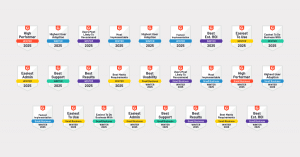Being headquartered in Australia means the Christmas and holiday season is usually all about summer holidays for our HQ team. Since launching the new cloud Synergy in November 2017, we’ve welcomed customers to the Synergy community in seven countries around the world. We also have our UK team who are enjoying evenings by the fire, rugged up against the cold London nights.
But wherever you are in the world, and however you celebrate or mark the Christmas and holiday season, it’s a time for many to focus on other things than business and projects.
Helpdesk hours
Our helpdesk will be on reduced hours at our Sydney HQ from mid-afternoon on Friday 21 December 2018 to Monday 7 January 2019. We will be monitoring the helpdesk for critical issues throughout that time, but critical issues only.
Our UK team will be off from late afternoon Friday 21 December to 2 January 2019 — monitoring support in GMT business hours.
From all of us at #TeamTotalSynergy, Merry Christmas, Happy Holidays and here’s a prosperous 2019!




